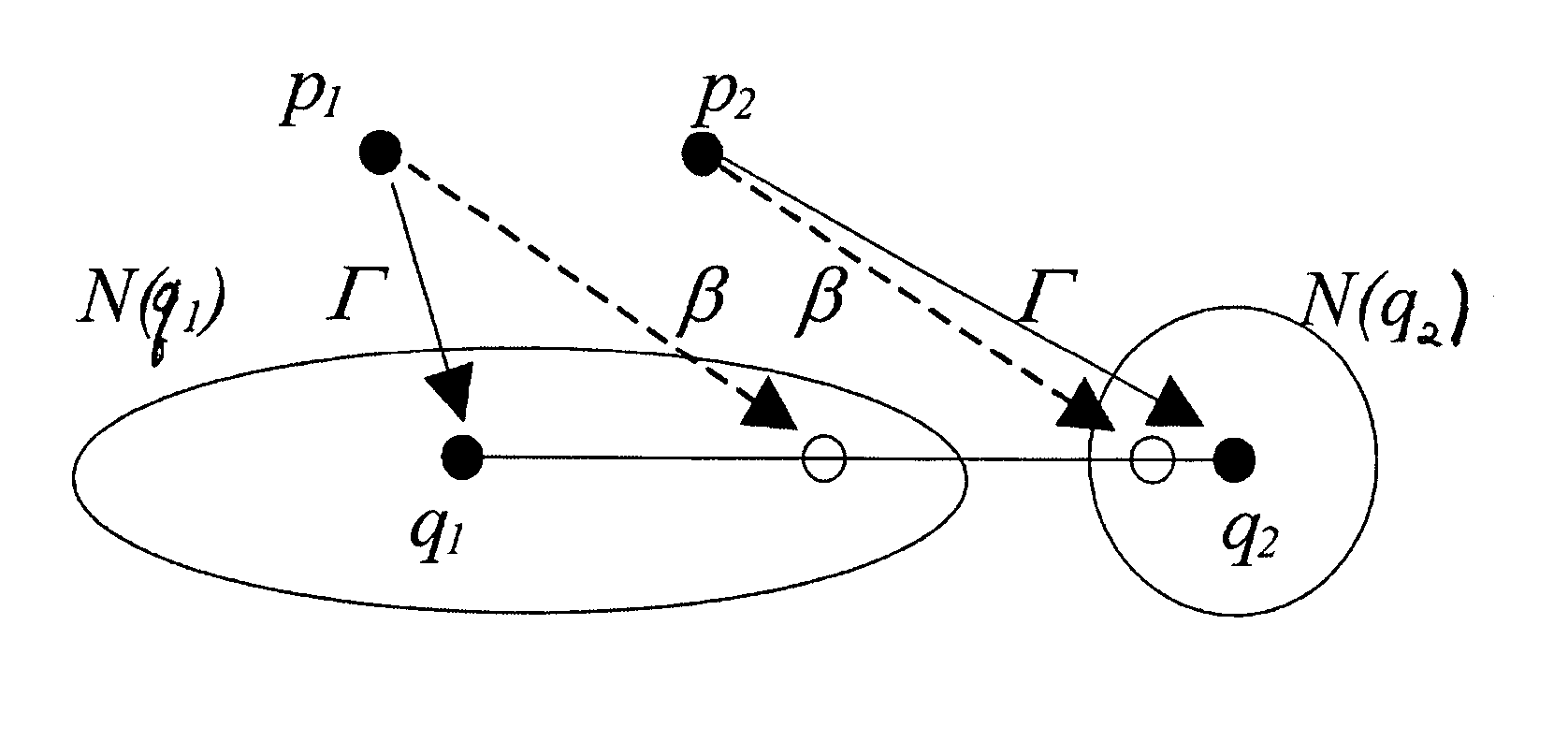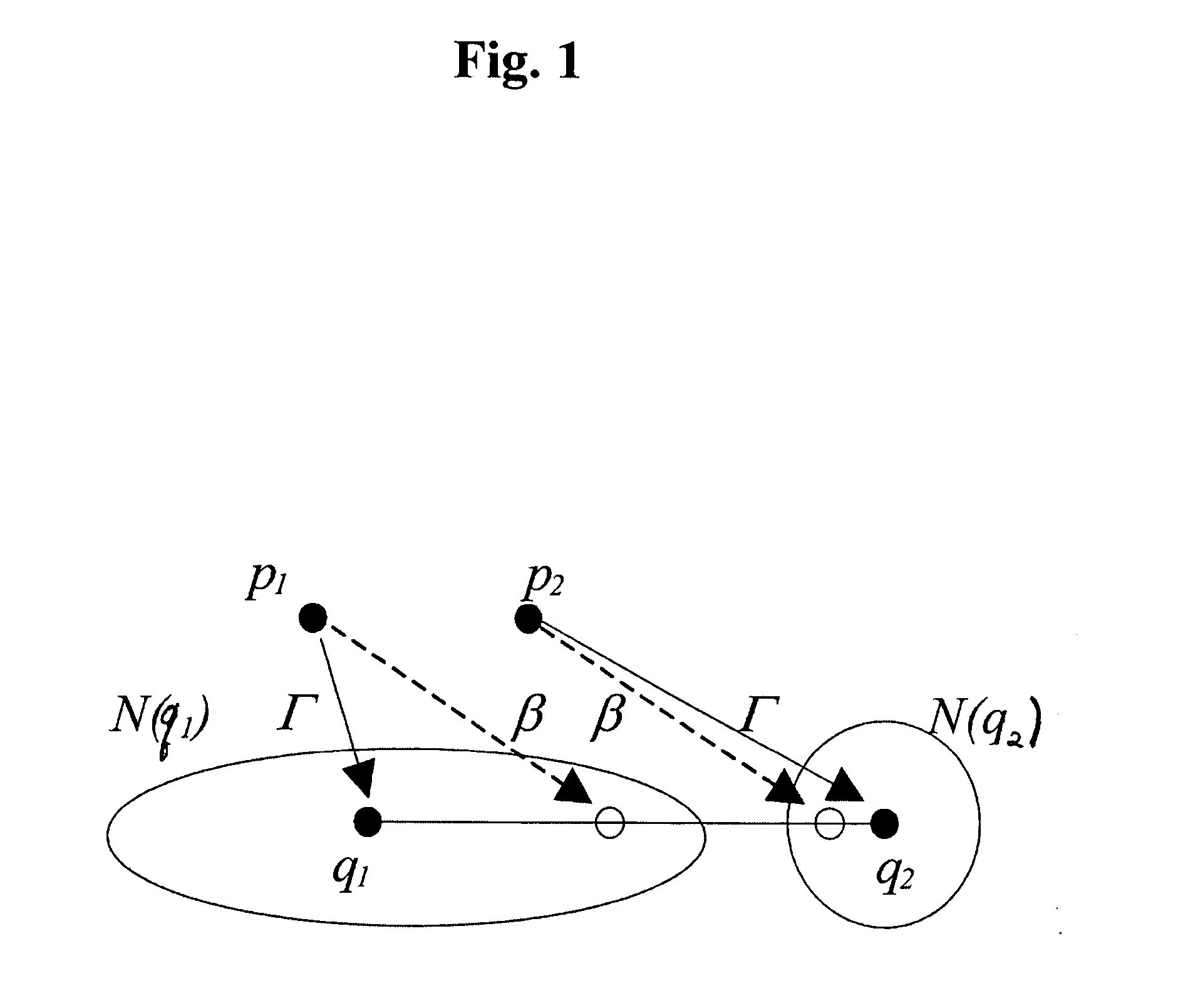Distance sorting algorithm for matching patterns
- Summary
- Abstract
- Description
- Claims
- Application Information
AI Technical Summary
Benefits of technology
Problems solved by technology
Method used
Image
Examples
Embodiment Construction
The present invention attempts to match patterns contained in two sets of data. FIG. 2 illustrates a simple example in which these two sets of data correspond to points p's and q's, respectively. In particular, an attempt is made to match the shaded object defined by points p1, p2 and p3 with its counterpart in the q set.
In performing this matching function, the present invention relies on a sorting algorithm which will now be discussed. Any set, Δ={δ1, δ2, . . . δM}, of real numbers can be decomposed into a union of subsets, Δ=⋃kΔk,
where each Δk consists of all the numbers equal to a given number. This decomposition can be found by sorting Δ in ascending order
δπ(1)=δπ(2)= . . . =δπ(i1)<δπ(i1+1)= . . . =δπ(i2)< . . . <δπ(im−1+1)= . . . =δπ(M),
where π denotes the resulting permutation of the index set IΛ={1, 2, . . . , M}. Then each Δk={δπ(ik−1+1), . . . δπ(ik)}. Alternatively, this decomposition can be expressed in terms of index sets: IΔ=...
PUM
 Login to View More
Login to View More Abstract
Description
Claims
Application Information
 Login to View More
Login to View More - R&D
- Intellectual Property
- Life Sciences
- Materials
- Tech Scout
- Unparalleled Data Quality
- Higher Quality Content
- 60% Fewer Hallucinations
Browse by: Latest US Patents, China's latest patents, Technical Efficacy Thesaurus, Application Domain, Technology Topic, Popular Technical Reports.
© 2025 PatSnap. All rights reserved.Legal|Privacy policy|Modern Slavery Act Transparency Statement|Sitemap|About US| Contact US: help@patsnap.com



